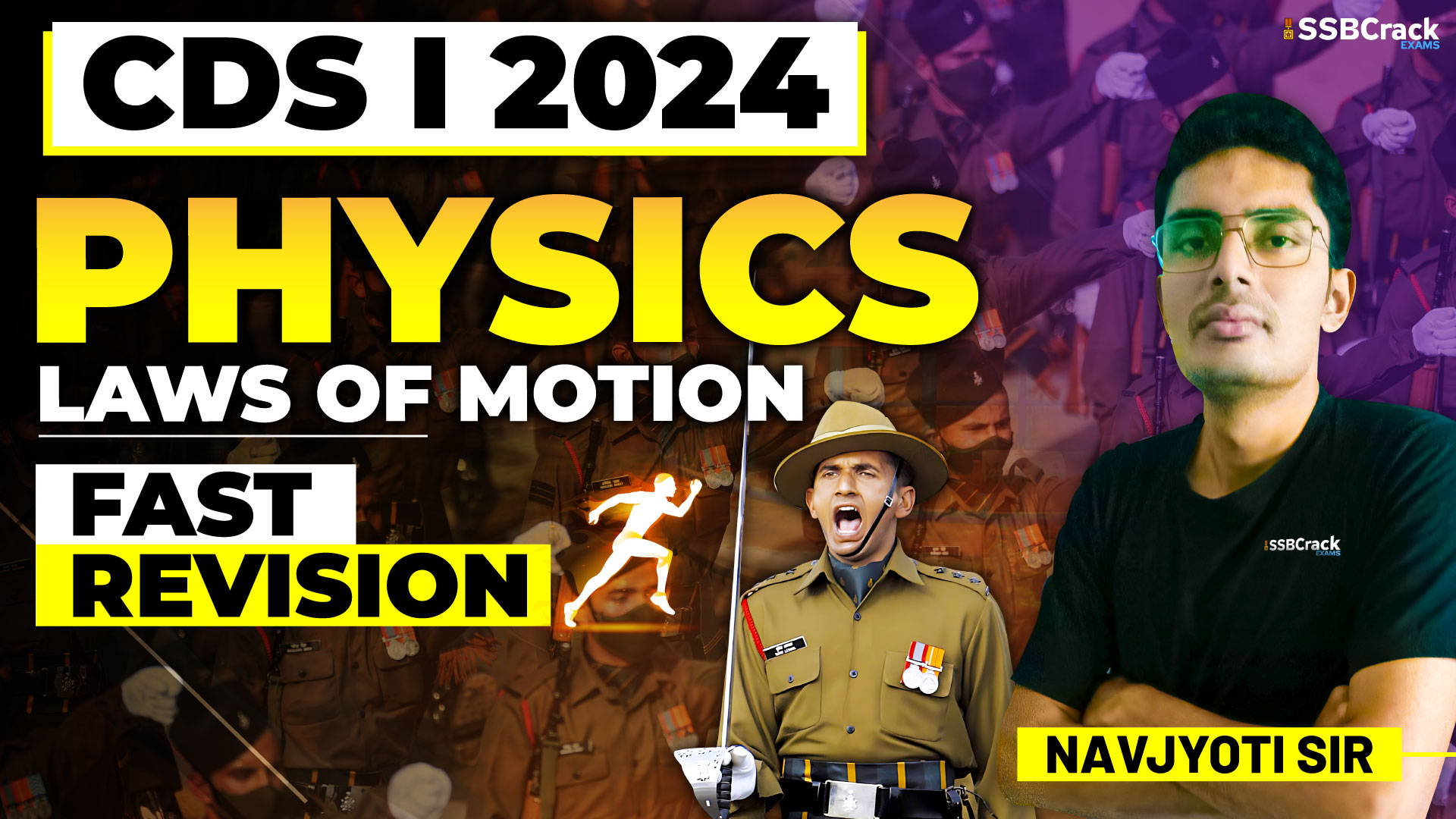Welcome to the CDS 1 2024 Physics Lecture on the Laws of Motion! In this session, we’ll explore the fundamental principles that govern the motion of objects in the universe. From understanding inertia to examining Newton’s laws of motion and exploring concepts like momentum, impulse, and collisions, this lecture will provide a comprehensive overview of the laws that shape our physical world.
Inertia
Let’s start with inertia. Inertia is the natural tendency of objects to resist changes in their state of motion. It’s why things stay still when you’re not pushing or pulling them and why it’s hard to stop a moving object. Inertia is crucial to understanding how objects behave and interact with their surroundings.
Newton’s Three Laws of Motion
Newton’s three laws of motion are the foundation of classical mechanics and provide a framework for understanding the behavior of objects in motion.
- Newton’s first law states that an object will remain at rest or in uniform motion unless acted upon by an external force.
- Newton’s second law relates the force applied to an object, its mass, and its acceleration.
- Newton’s third law states that for every action, there is an equal and opposite reaction. These laws help us analyze the forces acting on objects and predict their motion.
Momentum and Impulse
Momentum is a measure of an object’s motion and is determined by its mass and velocity. The greater an object’s momentum, the harder it is to stop. Impulse, on the other hand, is the change in momentum that occurs when a force is applied to an object over a period of time. Momentum and impulse are crucial concepts for understanding how forces affect the motion of objects.
Force, Mass, and Acceleration
Newton’s second law tells us that the acceleration of an object is directly proportional to the force acting on it and inversely proportional to its mass. In other words, the more force applied to an object, the greater its acceleration, and the more massive an object is, the harder it is to accelerate. Understanding the relationship between force, mass, and acceleration helps us analyze the motion of objects in various situations.
Conservation of Momentum
The principle of conservation of momentum states that the total momentum of a closed system remains constant if no external forces act on it. This means that in collisions or explosions where no external forces are involved, the total momentum before the event is equal to the total momentum after the event. Conservation of momentum is a fundamental principle in physics and is used to analyze collisions and other interactions between objects.
Collisions
Collisions occur when two or more objects come into contact with each other. There are two main types of collisions: elastic and inelastic. In elastic collisions, kinetic energy is conserved, meaning the total energy of the system remains constant. In inelastic collisions, kinetic energy is not conserved, and some of the energy is transformed into other forms, such as heat or sound. Understanding collisions helps us analyze the outcomes of interactions between objects and predict their behavior.
Conclusion
In this lecture, we’ve explored the laws of motion, from inertia and Newton’s three laws to concepts like momentum, impulse, and collisions. These laws provide a framework for understanding the behavior of objects in motion and are essential for analyzing forces and predicting motion. By mastering these principles, we can unlock the mysteries of the physical world and better understand the universe around us. Keep exploring, keep learning, and embrace the beauty of motion in all its forms!





















